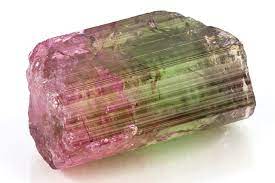Tourmaline Gemstone Mining: A Journey with Wigmore Trading to Unearth Nature’s Treasures
Tourmaline Gemstone Mining: A Journey with Wigmore Trading to Unearth Nature’s Treasures
Welcome, gemstone enthusiasts and adventure seekers! Today, we embark on an extraordinary journey alongside Wigmore Trading as they lead us deep into the heart of tourmaline gemstone mining. Get ready to witness Mother Nature’s hidden treasures being unearthed right before your very eyes. From the rugged terrains to the mesmerizing colors that dance in every facet, this is a tale that will leave you breathless with wonder. So fasten your seatbelts and prepare for an unforgettable expedition through time and space as we explore the captivating realm of tourmaline gemstone mining!
Introduction to Tourmaline Gemstone Mining
Introduction to Tourmaline Gemstone Mining
Tourmaline is a beautiful gemstone that comes in a variety of colors, making it a highly sought-after stone in the world of jewelry. It is an aluminum borosilicate mineral with complex chemical composition and can be found in many regions around the globe. However, some of the most significant deposits of tourmaline are found in countries like Brazil, Madagascar, Tanzania, Afghanistan, and Nigeria.
Tourmaline mining has been around for centuries and has played a crucial role in the development of various cultures throughout history. The ancient Egyptians used tourmalines as protection against danger and evil forces, while the Romans believed that it could soothe one’s mind and strengthen their body.
Today, tourmaline mining is still an essential industry, providing rare and valuable gems that are treasured by jewelers and collectors worldwide. In this article, we will take you on a journey to explore the fascinating world of tourmaline gemstone mining.
The History of Tourmaline Mining
The earliest recorded evidence of tourmaline mining dates back to 1500 BC when Egyptian miners discovered green crystals near Aswan along the Nile River. These stones were later identified as schorl – a black variety of tourmaline – which was valued for its electrical properties.
History and Origins of Tourmaline Gemstone
Tourmaline gemstones have been admired and coveted by civilizations for centuries, with a rich history and fascinating origins that make them truly unique. In this section, we will delve into the history of tourmaline gemstones and how they came to be one of the most sought-after gems in the world.
Originating from Sri Lanka
The first recorded discovery of tourmaline was in 1703 on the island of Sri Lanka, formerly known as Ceylon. It is believed that Dutch traders were the first to bring these colorful stones back to Europe, where they quickly gained popularity among aristocrats and royalty. The name “tourmaline” is derived from the Sinhalese word “turmali,” which means “mixed colored stones.”
Discovery in Brazil
In the late 1800s, tourmaline deposits were discovered in Brazil by Portuguese explorers. This led to a surge in demand for these gems as Brazilian tourmalines boasted vibrant hues and superior clarity compared to those found in Sri Lanka. Today, Brazil remains one of the largest producers of tourmaline gemstones.
Color Variations
One of the most distinctive characteristics of tourmaline gemstones is their wide range of colors. While other gems are usually found in one or two dominant colors, tourmalines can come in a plethora of shades including pink, green, blue, red, yellow, orange, purple, brown and even black.
Importance and Uses of Tourmaline in Various Industries
Tourmaline is a unique gemstone that has been used for centuries in various industries due to its beauty and remarkable properties. Its name is derived from the Sinhalese word “turmali,” meaning “mixed gemstones,” reflecting its wide range of colors and compositions. Tourmaline can be found in different shades, including pink, green, blue, red, black, and even colorless.
The importance of tourmaline lies not only in its aesthetic appeal but also in its physical and chemical properties that make it valuable across different fields. Let’s take a closer look at how this gemstone is utilized in various industries.
1) Jewelry Industry:
Tourmaline’s vibrant colors and durability have made it a popular choice among jewelry designers. It is commonly used as a centerpiece or accent stone in rings, necklaces, earrings, and bracelets. Pink tourmalines are highly sought-after for their delicate hue, while green tourmalines are favored for their deep forest-like tones. Black tourmalines with their high luster also make stunning statement pieces.
2) Electronics Industry:
One of the most significant uses of tourmaline is seen in the electronics industry due to its piezoelectric and pyroelectric properties. These properties allow it to generate electricity when put under pressure or heat – making it ideal for use in electronic devices such as smartphones, laptops, televisions, etc.
The Process of Tourmaline Mining: From Exploration to Extraction
The process of tourmaline mining can be a long and challenging journey, but it is also an exciting one filled with the potential to unearth rare and valuable gems. From initial exploration to final extraction, every step in the process requires careful planning and expertise.
Exploration
The first step in tourmaline mining is exploration. This involves conducting geological surveys and studying the land for potential deposits of tourmaline. Experienced geologists use various techniques such as satellite imagery, mapping, and ground surveys to identify areas where tourmaline may be found.
Once a potential site has been identified, small-scale test mining may be conducted to determine the quality and quantity of the tourmaline present. This helps miners decide if it is worth investing resources into larger scale operations.
Preparation
Before any actual mining can take place, extensive preparation work needs to be done at the site. This includes constructing roads for access, setting up camps for workers, installing necessary equipment and machinery, and ensuring compliance with safety regulations.
Mining Operations
There are two primary methods used in tourmaline mining: open-pit mining and underground mining.
Open-pit Mining:
In this method, large pits or quarries are created by removing soil and rock layers covering the mineral deposit. Heavy machinery such as excavators and bulldozers are used to remove overburden material before reaching the gemstone-bearing layer below. Once exposed, the gem-bearing rock is carefully extracted using drills and explosives.
Challenges and Risks Faced by Tourmaline Miners
Tourmaline mining may seem like a glamorous and exciting venture, but it comes with its fair share of challenges and risks. As we journey with Wigmore Trading to unearth nature’s treasures, let us take a closer look at the challenges and risks faced by tourmaline miners.
1. Physical Challenges:
Mining for tourmaline involves working in harsh and remote environments. The mines are often located in mountainous regions or deep underground, making accessibility difficult. Miners have to endure extreme temperatures, high altitudes, and strenuous physical labor while digging for tourmaline crystals.
Furthermore, the mining process requires heavy machinery such as excavators, drills, and trucks, which can be dangerous to operate. Miners must be skilled in handling these machines to avoid accidents and injuries.
2. Health Risks:
The mining environment is filled with dust particles from drilling and blasting operations, which can cause respiratory problems if proper safety measures are not taken. Additionally, exposure to harmful chemicals used in the extraction process can lead to skin irritation or long-term health issues.
Moreover, miners often work long hours without adequate breaks or rest periods, leading to fatigue and exhaustion. This can also increase the risk of accidents on-site.
3. Safety Hazards:
Mining for tourmaline involves dealing with various hazards such as collapsing tunnels or unstable rock formations that can result in injuries or even death. To minimize these risks, miners must constantly monitor the stability of the mine shafts and reinforce them when necessary.
Wigmore Trading’s Role in the Tourmaline Supply Chain
Wigmore Trading plays a crucial role in the tourmaline supply chain, acting as a reliable and ethical source for sourcing and distributing this precious gemstone.
As a leading importer and exporter of colored gemstones, Wigmore Trading is committed to promoting responsible mining practices and supporting local communities. This commitment is evident in their involvement in the tourmaline supply chain, from sourcing rough stones directly from mines to processing and selling them to international markets.
One of the key aspects of Wigmore Trading’s role in the tourmaline supply chain is their emphasis on ethical sourcing. They work closely with local miners and mining companies, ensuring fair labor practices and responsible environmental management. By partnering with small-scale miners, they aim to improve livelihoods of communities while also promoting sustainable mining methods.
Upon receiving rough stones from mines, Wigmore Trading’s team of experts meticulously sort and grade each stone based on color, clarity, size, cut, and origin. This quality control process ensures that only the best tourmalines are chosen for further processing.
Wigmore Trading also takes great care in cutting and polishing these precious gems to bring out their natural brilliance and unique colors. Their skilled lapidaries use traditional techniques combined with modern technology to create high-quality faceted or cabochon-cut tourmalines that are ready for sale.
In addition to supplying loose tourmalines to jewelry manufacturers worldwide, Wigmore Trading also offers custom cutting services for clients who have specific design requirements.
Sustainable Practices in Tourmaline Mining: Protecting the Environment and Supporting Local Communities
Tourmaline is a precious gemstone that has been coveted for centuries due to its unique and mesmerizing colors. However, the process of mining tourmaline can have a significant impact on the environment and local communities if not done responsibly. That’s why at Wigmore Trading, we are committed to practicing sustainable methods in our tourmaline mining operations.
One of the main goals of sustainable practices in tourmaline mining is to minimize harm to the natural environment. Traditional mining methods involve large-scale excavation, which can cause deforestation, soil erosion, and pollution of water sources from chemicals used in extraction processes. At Wigmore Trading, we use modern techniques such as open-pit mining with minimal blasting and controlled use of explosives. This helps us avoid excessive damage to vegetation and wildlife habitats.
In addition, we also prioritize reforestation efforts by planting native trees in areas where they have been cleared for mining activities. This not only helps restore the ecosystem but also contributes to carbon sequestration, helping combat climate change.
Besides protecting the environment, sustainable tourmaline mining practices also have a positive impact on local communities. We understand that many rural communities depend on natural resources for their livelihoods and well-being. That’s why we work closely with these communities to ensure that our operations do not disrupt their way of life.
At Wigmore Trading, we provide employment opportunities for locals and invest in training programs to equip them with valuable skills that can be used beyond the mine site.
Journey with Wigmore Trading
Wigmore Trading is a leading company in the gemstone mining industry, renowned for their commitment to ethical and sustainable practices. For decades, they have been dedicated to sourcing the finest quality tourmaline gemstones from mines all around the world. But what sets them apart is not just their expertise in gemstone extraction, but also their deep appreciation for the journey that each gemstone takes before it reaches its final destination.
The journey with Wigmore Trading starts long before any mining takes place. It begins with extensive research and exploration to identify potential sites where tourmaline deposits can be found. This process involves studying geological maps, conducting field surveys, and consulting with local geologists and experts. Once promising locations are identified, small-scale miners are hired to work alongside Wigmore Trading’s team of experienced miners.
But this is not your typical mining operation. Wigmore Trading has a strong commitment to ethical practices and sustainable development. They ensure that their operations do not contribute to environmental degradation or cause harm to local communities. As such, they employ low-impact mining techniques that minimize damage to the surrounding ecosystem and prioritize the safety and well-being of their workers.
Once mining begins, it’s a labor-intensive process of digging through soil layers until reaching the mineral-rich strata where tourmaline deposits are found. The extracted material is then carefully sorted by hand by skilled workers who have an eye for identifying valuable gems among rocks and dirt.








Comments are closed.